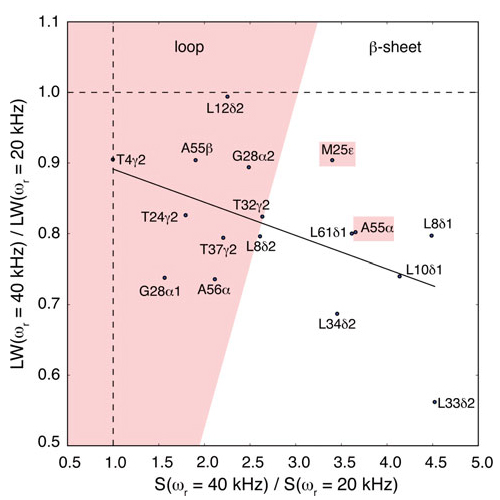Optimal degree of protonation for 1H detection of aliphatic sites in randomly deuterated proteins as a function of the MAS frequency
24-Oct-2012
J Biomol NMR, 2012, DOI 10.1007/s10858-012-9659-9, Volume 54, Issue 2, pp 155-168 published on 24.10.2012
The 1H dipolar network, which is the major obstacle for applying proton detection in the solid-state, can be reduced by deuteration, employing the RAP (Reduced Adjoining Protonation) labeling scheme, which yields random protonation at non-exchangeable sites. We present here a systematic study on the optimal degree of random sidechain protonation in RAP samples as a function of the MAS (magic angle spinning) frequency. In particular, we compare 1H sensitivity and linewidth of a microcrystalline protein, the SH3 domain of chicken α-spectrin, for samples, prepared with 5–25 % H2O in the E. coli growth medium, in the MAS frequency range of 20–60 kHz. At an external field of 19.96 T (850 MHz), we find that using a proton concentration between 15 and 25 % in the M9 medium yields the best compromise in terms of sensitivity and resolution, with an achievable average 1H linewidth on the order of 40–50 Hz. Comparing sensitivities at a MAS frequency of 60 versus 20 kHz, a gain in sensitivity by a factor of 4–4.5 is observed in INEPT-based 1H detected 1D 1H,13C correlation experiments. In total, we find that spectra recorded with a 1.3 mm rotor at 60 kHz have almost the same sensitivity as spectra recorded with a fully packed 3.2 mm rotor at 20 kHz, even though ~20× less material is employed. The improved sensitivity is attributed to 1H line narrowing due to fast MAS and to the increased efficiency of the 1.3 mm coil.











